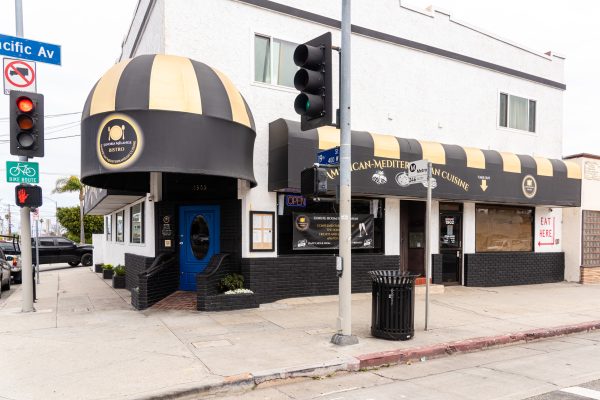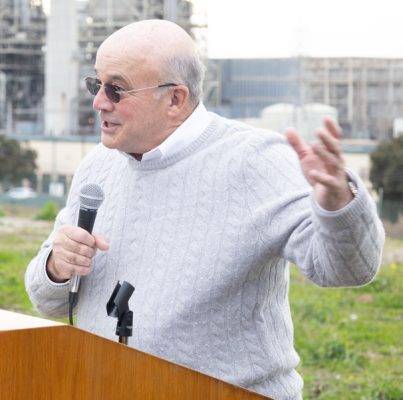
The Redondo Beach City Council ended its second King Harbor-related appeal in as many months much as it did the first. Development activist Jim Light’s appeal against the Harbor Commission’s decision to entitle the construction and design of a boat launch facility on Mole B was denied, clearing the path for the ramp project to move forward.
“In my 44 years, this has been the hardest experience I’ve ever been through,” said boat ramp design consultant Jon Moore, of Noble Consultants. “It’s the most talked about, most debated and most discussed project, and I’ve done probably 15, 16, 17 plans of all different types and sizes.”
The construction of a boat launch facility, and more specifically a boat ramp, in King Harbor has been the subject of discussion since King Harbor’s construction in the 1960s.
Progress toward the ramp’s construction has come in recent years, however, as the California Coastal Commission has made heavy-handed indications to Redondo city staff that approval for any major waterfront redevelopment projects would hinge upon the construction of a ramp facility.
On Oct. 10, the Redondo Beach Harbor Commission approved the boat ramp plan at Mole B, one of four man-made outcroppings within King Harbor, after a lengthy and contentious hearing that ended in a 4-2 vote, with one abstention.
As designed, the facility would consist of a two-lane boat ramp; a boat hoist with a capacity to lift five tons; three queuing docks to support boats arriving and departing at both the ramp and the hoist; two boat wash-down areas; and 32 parking spaces.
A series of discussions led city staff to the conclusion that Mole B is the best of a bad situation, given site control; the city and leaseholder Marina Cove Ltd. have worked closely on the facility design. As Moore said in a presentation before the Harbor Commission, decades of development have led to a situation where there is no ideal place to build a ramp in 2016.
Light’s appeal argued that the proposed ramp design and its approval was made prematurely and without sufficient assessment of the ramp’s impacts. At the center of his argument is the idea that, for much of the design process, discussion of the ramp’s location brushed aside Mole B. Instead, designs focused on Mole A, the home of the King Harbor Yacht Club, and Mole C, the location of Joe’s Crab Shack. Mole D, which is near the entrance of Basin 3 and the home to Samba Brazilian Steakhouse, was dismissed; a ramp there would bisect the proposed CenterCal waterfront redevelopment project.
This leads to what Light believes are severe safety concerns. The design for the Mole B ramp would require boaters to make wide maneuvering turns toward Basin 1, where hundreds of boat slips currently exist, before swinging out into the harbor’s main channel.
“Comments from public safety experts make it clear they feel it’s unsafe for a lack of maneuvering space, the proximity to a narrow fairway, traffic in that fairway, other boating activities in and around that location, and a blind corner between the main fairway and the Basin 1 fairway,” Light argued. “This was chosen for political reasons, and not because it’s the best and the safest location.”
Mole C was, at one time, a location approved by the Harbor Commission, as noted by Councilman and then-Commissioner Christian Horvath. However, in Oct. 2014, Harbor Commission’s recommendation was shot down by the Council for its proximity to the nearby Seaside Lagoon and the potential for it to be opened up to harbor waters as part of the waterfront redevelopment plan. Staff was then tasked to look at other alternatives within King Harbor.
But according to retired Harbor Patrol Captain Tim Dornberg, one of the experts whose testimony Light relied upon in his appeal, Mole D was not among the options on the table.
“We were told from the onset that Mole D was not on the table,” Dornberg said. “That was the sacred cattle, that’s where CenterCal was going to be, so we wouldn’t waste time talking about its good aspects because it wasn’t going to be considered.”
Consideration of Mole B, Dornberg said, was a struggle. “We couldn’t figure out how to make it work there…I’m impressed with staff’s fitting something in there, but it’s wrong and unsafe,” Dornberg said. “I’d hate to testify in some future law case in something that arose from a Mole B boat launch collision…I’d be testifying against the city I grew up in and worked for, and I couldn’t stand there and perjure myself.”
Among Light’s accusations was that the verbatim concerns of Harbor Patrol experts were not communicated to staff by Redondo Beach Fire Chief and Harbor Master Bob Metzger. Metzger, however, noted that he sent all of his staff’s concerns to city management.
“Here’s the hard fact: Safety is not an absolute, and you cannot say that something is absolutely, 100 percent safe,” Metzger said. “We believe that this is a safe boat ramp, and to make it safer, we’ve proposed an operation and safety plan, which we believe will create a safer experience for those who come down.”
According to Waterfront and Economic Development Director Stephen Proud, staff concerns were taken into consideration and shaped the evolving ramp design, including the proposal to move slips that would otherwise conflict with the area.
To Mayor Steve Aspel, the appeal was an inevitability. “No matter where we put it in the harbor, some special interest will oppose it…everyone in the world is a special interest, and I don’t think anyone will be happy, no matter where we put it,” Aspel said. “I think the chief put it perfectly…it’s inherently unsafe anywhere there are water sports.”
Councilman Bill Brand was unconvinced by both Metzger and Aspel, giving more weight to the numerous other expert testimony before him. “Let me remind you, these are safety professionals, so as you vote, you understand what you’re dealing with,” Brand said to his Council colleagues. “The ‘special interest’ I represent is the general public…recreational uses of the public are being squeezed out by big developer plans.”
Horvath, however, was tired of indecision. “We keep putting forward a ramp, and over and over again we keep having the same conversations, and the same concerns that were brought to light tonight were brought to light before, so we punt, because it’s the easy thing to do. The hard thing to do is to say yes, and figure out how to mitigate and solve potential safety issues” Horvath said. “If we punt, we’re doing a disservice to access…I don’t want to punt anymore.”
Councilwoman Laura Emdee agreed, motioning to deny Light’s appeal and approve the ramp design. Horvath seconded, and the vote passed 3-2.
After the meeting, Light was incredulous.
“What I liked about the way it transpired is now any public watching can see how biased the process is toward the developer,” Light said. “You had the most impassioned pleas from public safety, and for them to ignore all that made their bias blatantly obvious.” ER








